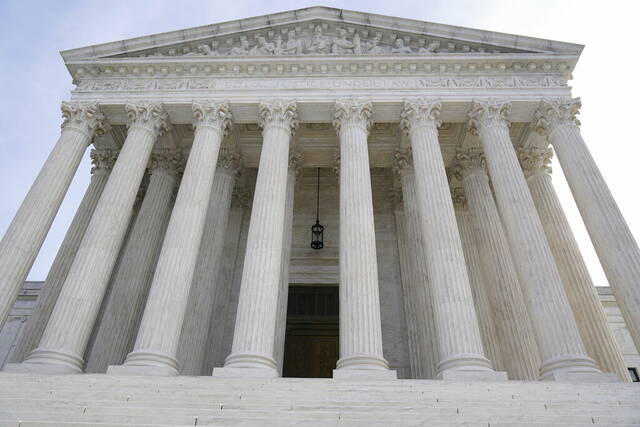Christopher Brooks: Supreme Court should revisit history in affirmative action cases
The Supreme Court recently agreed to hear lawsuits against Harvard and the University of North Carolina for unconstitutionally discriminating against Asian-American students in its admissions program. As justices revisit the issue of affirmative action, they could learn something from John S. Rock, the first Black attorney admitted to practice before the court in 1865. Rock showed how pernicious it is for government to “make race relevant to the provision of burdens or benefits,” as Justice Clarence Thomas wrote in his opinion in the landmark 2003 affirmative action case, Grutter v. Bollinger.
Despite significant government-imposed racial barriers, Rock accomplished much during his 41 years. Born in New Jersey in 1826, he was a teacher, dentist, physician and Lyceum speaker who shared the stage with fellow abolitionist William Lloyd Garrison. But Rock’s role as an attorney has been forgotten.
Rock’s historic path began when he couldn’t find a medical school that would accept Black students. He practiced dentistry until his admittance to a Philadelphia medical school in 1850. Soon thereafter, Rock moved to Boston’s Beacon Hill, home to a vibrant Black community, where he opened a successful medical practice while also captivating audiences as a popular abolitionist speaker and advocate for Black pride.
By 1858, though, the debilitating effects of what was likely tuberculosis made it increasingly difficult for Rock to practice medicine. He applied for a passport to travel to France for experimental medical treatment, but Secretary of State Lewis Cass denied the request on account of his race, writing that a “passport, being a certificate of citizenship, has never, since the foundation of the Government, been granted to persons of color.”
Cass was surely relying on the previous year’s decision by Supreme Court Chief Justice Roger Taney in the infamous Dred Scott v. Sandford, which held that Black Americans like Rock could never enjoy the benefits of citizenship because of their skin color. But in a win for Rock — and federalism — the Massachusetts Legislature intervened and allowed passports to be “granted to any citizen, whatever his color may be.” Rock made it to France, but despite partially successful medical treatments, he could never practice medicine again.
It’s perhaps unsurprising that Rock, unable to treat patients, turned his sights to law after the State Department relied on Dred Scott to deprive him of the benefit of a passport. Rock became only the fourth Black lawyer in Massachusetts. As a contemporary noted, Rock was “a good lawyer” who gained the attention of Massachusetts Sen. Charles Sumner, a radical Republican best known for surviving an 1856 bludgeoning by a proslavery Democrat in the U.S. Senate chamber. A fellow abolitionist, Sumner became a staunch advocate for Rock.
For years, Rock doggedly pressed Sumner to move his admission to the U.S. Supreme Court bar, but it took Taney’s death in 1864 for Rock to get a chance. Still, even with Taney gone, there were four other justices on the bench who had sided with him in Dred Scott: James M. Wayne, Samuel Nelson, Robert C. Grier and John Catron. Would they make Rock’s race a factor in his admission to the court?
When Chief Justice Salmon P. Chase finally raised the issue of Rock’s admission, at least one justice opined that Rock’s lack of citizenship — on account of Dred Scott — could be a barrier to bar membership. But in a triumph for textualism, Chase wrote to Sumner that other justices “expressed the opinion that the rule must govern” — the court’s rules for the admission of new lawyers — “& that in (the admission rule) there was no disqualification on the ground of color.” Chase wrote to Sumner that the meeting about Rock’s admission adjourned “with the understanding that colored men qualified could be admitted (sic) without regard to complexion — progress!”
When the court admitted Rock to the Supreme Court bar on Feb. 1, 1865, Francis W. Bird, editor of The Boston Commonwealth, reported that Clerk of the Court Daniel W. Middleton “studiously averted his face from Mr. Rock … I do not wonder, for it must have been a bitter pill for (Middleton) to administer the oath, under those circumstances, to a colored counsellor-at-law.”
Chase correctly declared “progress” when the justices applied a race-neutral rule to admit Rock to the Supreme Court. Since Rock joined the court bar in 1865, the United States has made dramatic progress toward achieving the 14th Amendment’s guarantee of racial equality. But today, in too many respects, public institutions like UNC still place Americans on “racial registers,” as Thomas wrote in 2013, which “demeans us all.”
More than 157 years after Rock’s bar admission to the Supreme Court, it’s encouraging to see that the justices will take up the UNC and Harvard cases. Let’s hope that they apply one of the most important lessons from John Rock’s life: Progress requires getting the government out of the business of using race to decide who gets access to benefits like university admission.
Christopher Brooks is a professor of history at East Stroudsburg University.
Remove the ads from your TribLIVE reading experience but still support the journalists who create the content with TribLIVE Ad-Free.

